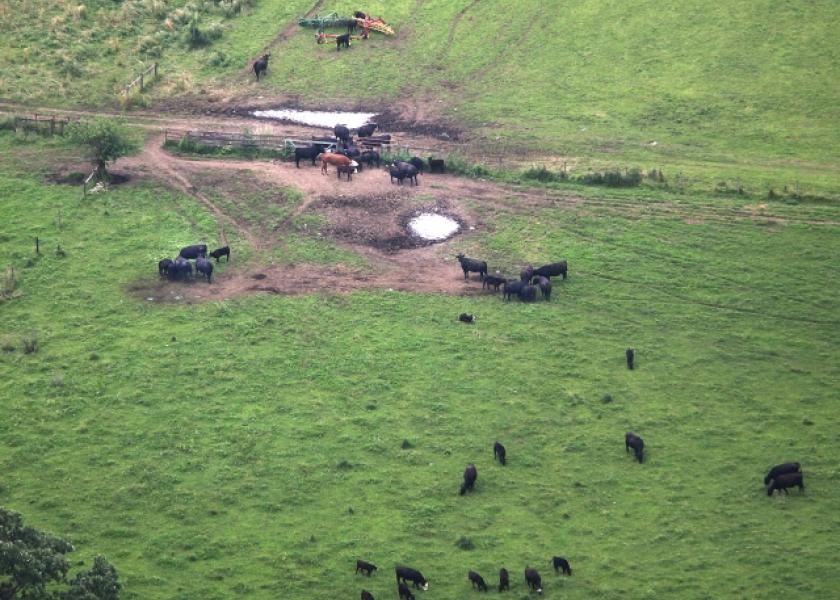Grazing Wet Fields Could Expose Cattle to Foot Rot, Pinkeye

Cattle grazing for prolonged periods in flooded or muddy pastures are at greater risk for foot rot and pinkeye, two bacterial infections that thrive in wet conditions, a Purdue Extension veterinary specialist says.
“Because of the tremendous amount of rain we’ve had in Indiana and much of the Midwest, many fields and pastures have become saturated,” said W. Mark Hilton, clinical professor of food animal production medicine. “Under the circumstances, it is even more important for livestock producers to carefully monitor their animals’ health.”
Cattle with foot rot typically have a swollen foot with the toes, or “claws,” spread out more than usual. The tissue above the hoof, known as the coronary band, is also swollen.
“If you are able to pick up the foot to examine it, you will see the interdigital tissue is not smooth and unbroken as it should be,” Hilton said. “It has a lesion that can be mistaken for a cut from an external object. The fact is that the infection caused so much swelling that the tissue actually ruptured open.”
Pinkeye can affect cattle of all ages, but calves are especially susceptible, Hilton said.
“This results in rapid deterioration of the cornea,” he said. “Early signs include excessive tearing, squinting, avoiding sunlight and pain. On examination in the chute, you might notice an ulcer in the affected eye.”
For more information on pinkeye in cattle, download Hilton’s Extension bulletin.
Hilton said there are a variety of antibiotics that work well to treat both foot rot and pinkeye.
“If you are sure of the diagnosis, call your herd health veterinarian for advice on the best treatment and dosage indicated,” he said. “If you are unsure of the diagnosis or would like help in treatment, calling your herd health veterinarian will result in the best option for your animal.”
Source: Purdue Extension







